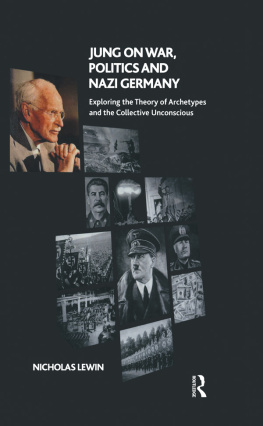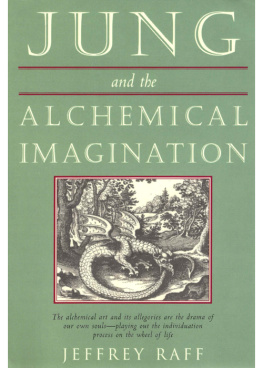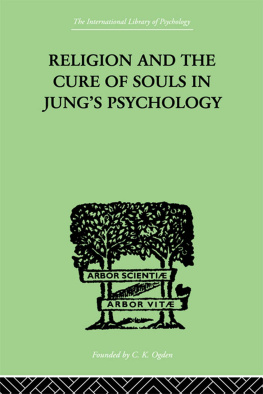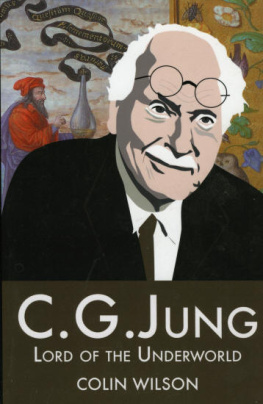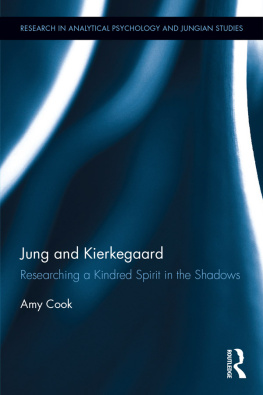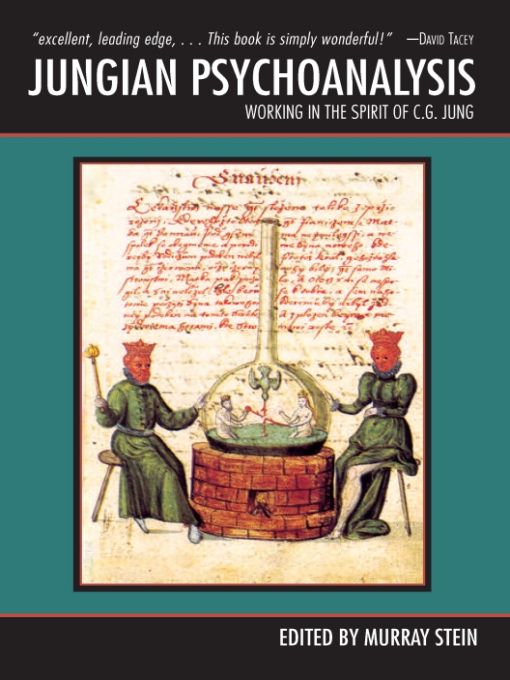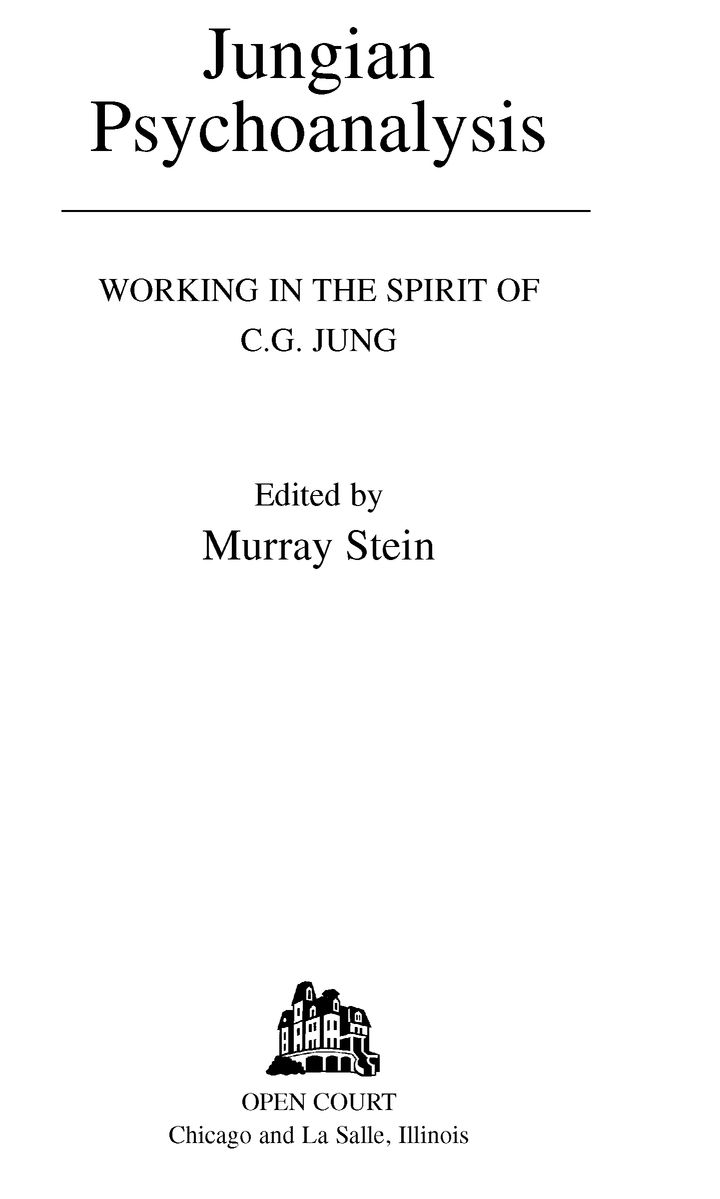Table of Contents
FOREWORD
Thomas B. Kirsch
The history of analytical psychology can be dated from the year 1912 when Jung first used the phrase in his book, Wandlungen und Symbole der Libido (later titled Symbols of Transformation in the Collected Works). At that time, Jung was still president of the International Psychoanalytic Association (IPA), and although in deep conflict with Freud was still considered a Freudian psychoanalyst. It was in the second half of this book that Jung first began to write about dream and myth as symbols of the collective psyche in a manner that led him away from Freud and infantile sexuality. He resigned from the IPA in 1914 and went through a serious and disorienting process of transformation, which he called Confrontation with the Unconscious in his autobiographical work, Memories, Dreams, Reflections. This period lasted until approximately 1918 (Jung 1961, ch. 6).
When Jung emerged from this inner crisis, analytical psychology was born as a separate but related discipline from psychoanalysis. Because of his basically introverted nature and what he had seen as a publicly and politically active Freudian, Jung was not interested in organizing a professional association around himself. However, because of his increasingly well known writings and many lectures in Switzerland and abroad, individuals from all over the world sought him out for analysis and consultation. This included a particularly significant contingent of people from both England and the United States. Jung began a series of English-speaking seminars in 1921 that were to last until 1939. A combination of analysis with Jung and/or one of his close assistants, mainly Toni Wolff, attendance at seminars, plus a letter from Jung were the basic requirements to establish one as a Jungian analyst. Hence, already prior to World War II there were Jungian analysts in Switzerland, England, the United States, Germany, France, Italy, and other countries. Small professional groups of analysts formed in Zurich, London, New York, and Berlin.
In these cities, too, Analytical Psychology Clubs existed in which both analysts and analysands were accepted for membership. The first of these had its initial meeting in Zurich on February 26, 1916. Its purpose was to provide a meeting place where those interested in archetypal symbolism and amplifying dream imagery could study specific symbols and hear lectures on related topics. Jung also wanted to see what the effect would be of having a group of analyzed people congregate together and how they would interact. Prior to World War II, there was some interest in forming a training institute in Zurich to be named after Jung, but such activities were interrupted by the war and were not renewed again until it ended. A collateral effect of the war was to disperse many of the Jewish Jungian analysts who have lived and worked in Europe to other parts of the world. Erich and Julia Neumann settled in Tel Aviv, James and Hilde Kirsch landed in Los Angeles, Ernst Bernhard fled to Rome, Gerhard and Hella Adler became influential members in London, and the list goes on. The above mentioned became founders of Jungian groups in their newly adopted countries.
After much prodding, Jung acquiesced and an institute named after him was founded in Zurich in 1947. Its goal was to train people in the theoretical and practical aspects of analytical psychology and Jungian analysis, and to that end it offered course work in clinical psychiatry, anthropology, mythology, comparative religion, fairy tales, and several other related fields. The C.G. Jung Institute of Zurich opened in 1948, and for the next twenty years it functioned as the worlds leading training center for Jungian analysts. Other training programs were formed in London, New York, Los Angeles, and San Francisco, but in terms of courses and number of trainees Zurich was the main center. London soon became a strong second in importance.
At the time of Jungs eightieth birthday in 1955, the International Association for Analytical Psychology (IAAP) was founded in Zurich to offer an organization structure for the growing number of Jungian analysts internationally and to formally establish the profession as an international entity. One of its primary missions was stated as convening international congresses every three years for the purpose of sharing theoretical and clinical perspectives, offering new ideas, and continuing the development of the field. The first such congress was held in Zurich in August 1958. Some 120 analysts from around the world attended, and Jung himself was present at the opening night and the banquet. Papers amplifying archetypal themes dominated the program. Attendance was strictly limited to analysts only.
The second congress, again held in Zurich, took place in1962. Jung had died in the interim. A sharp underlying conflict, which had already been present at the first congress, surfaced between the Zurich and London groups. The London Jungians had been deeply influenced by Melanie Klein, Donald Winnicott, Wilford Bion, and other Freudian psychoanalysts, and they had modified the classical Zurich ways of working with patients by utilizing the couch, increasing frequency of sessions to four times a week, and placing primary emphasis on analyzing transference and the impact of childhood development on adult psychological functioning. These modifications were a stark contrast to the approach that Jung himself had utilized and that the majority of Jungians worldwide continued to use in their practices, where they sat face-to-face with their patients, placed strong emphasis on dream interpretation and less on transference, and required a frequency of once or twice a week. For the next twenty years the conflict between London and Zurich dominated the congresses as well the field as a whole. The primary energy of analytical psychology gravitated between these two centers. First-generation Jungians who had analyzed with Jung presented their individual versions of the classical method by amplifying archetypal dream images, whereas the London school presented patients who showed early developmental problems with seemingly more severe psychopathology. In the beginning the contrast was quite marked.
By the mid-1980s, Freudian psychoanalysis had undergone a number of significant developments and shifts, including the appearance of the self psychology of Heinz Kohut and the Relational movement headed by Stephen Mitchell and Jessica Benjamin. In the Jungian world, analysts were paying more careful attention to boundary issues between patients and analysts, a wider variety of clinical issues became evident, and the distance between the London (developmental) and Zurich (classical) schools lessened. In the United States, there was a sharp increase of new analysts, and consequently the American voice was added as an important influence in the world of analytical psychology. International congresses were held in the United States in 1980 (San Francisco) and 1992 (Chicago), which at the beginning of the IAAP was not thought to be possible.
Psychoanalysis, which had its peak authority in mid-century and the decade beyond, began to lose some of its luster. Candidates were no longer lining up to become psychoanalysts. New developments in psychopharmacology promised instant relief from emotional difficulties, and analysis of any sort was no longer considered the gold standard of treatment for emotional disorders. During this same period, analytical psychology continued to grow and develop at a steady pace in the United States, England and Europe, and by 1989 there were 2000 accredited Jungian analysts within the IAAP. The major Western European countries had all developed national groups, which were growing in size. Although the main Jungian centers tended to be in the capital cities of these countries, satellite institutes were forming in the other major cities of each country. Some countries like Italy had two national societies due to political and theoretical differences, and England had four societies, all located in London. By 1989, most of the first generation of analysts, who had worked with Jung or Freud, were no longer active or had died, and relations between Freudian and Jungian psychoanalysts began to become more possible. The old feud that had raged in the first generation on both sides lessened, although even today it can flare up, especially in New York and Los Angeles where there is a large percentage of Jewish psychoanalysts. Jungs professional and cultural activities during the 1930s in relation to Germany continue to present a stumbling block for many professionals who otherwise might be interested in his work. To this day, rumors persist about Jung being a Nazi and actively anti-Semitic. Jungs relationship to the political situation in Europe at that time is complex, and discussions of it have rarely taken into account the nuances that must be addressed in order to understand his position accurately. Many of Jungs Jewish students have attempted to explain his position during the 1930s, but their clarifications have not dispelled the issue (Kirsch 1982 and 1983; Samuels 1993). A forthcoming book of correspondence between Jung and James Kirsch will provide new primary documentation of Jungs position during the 1930s.


